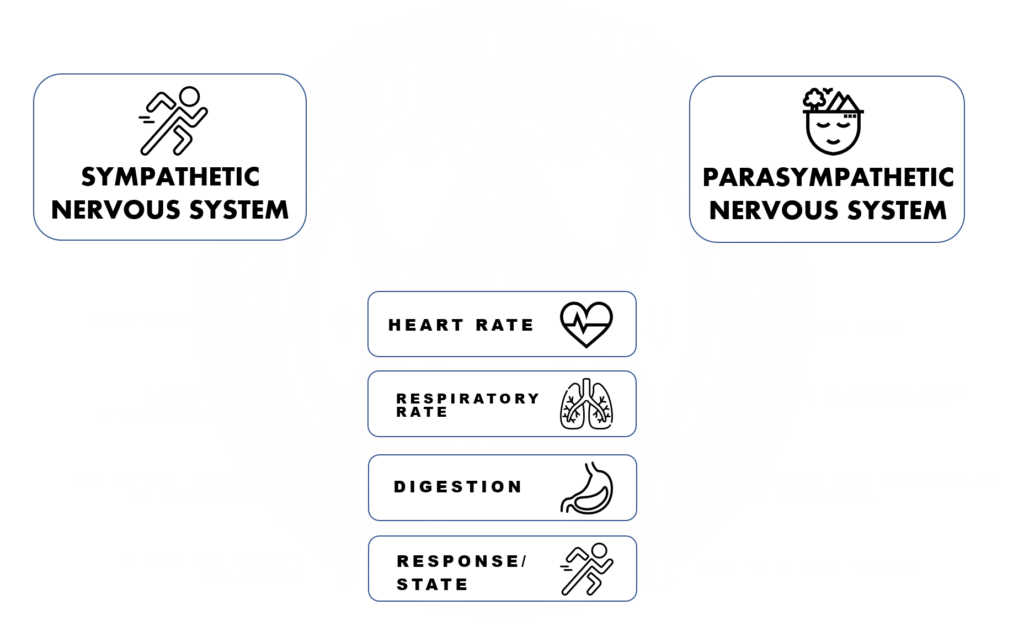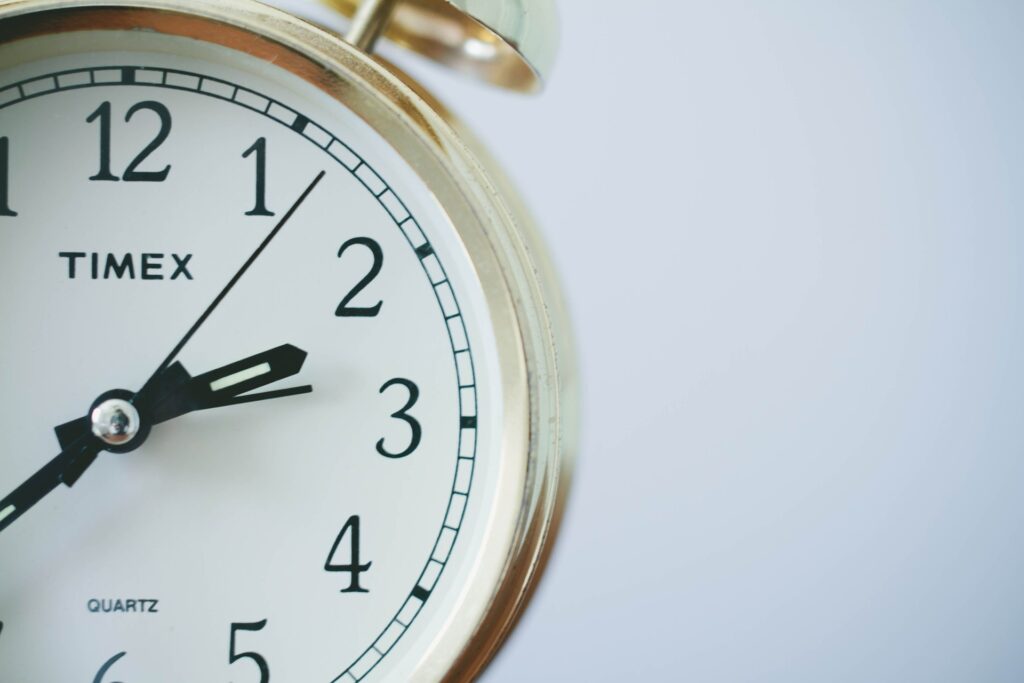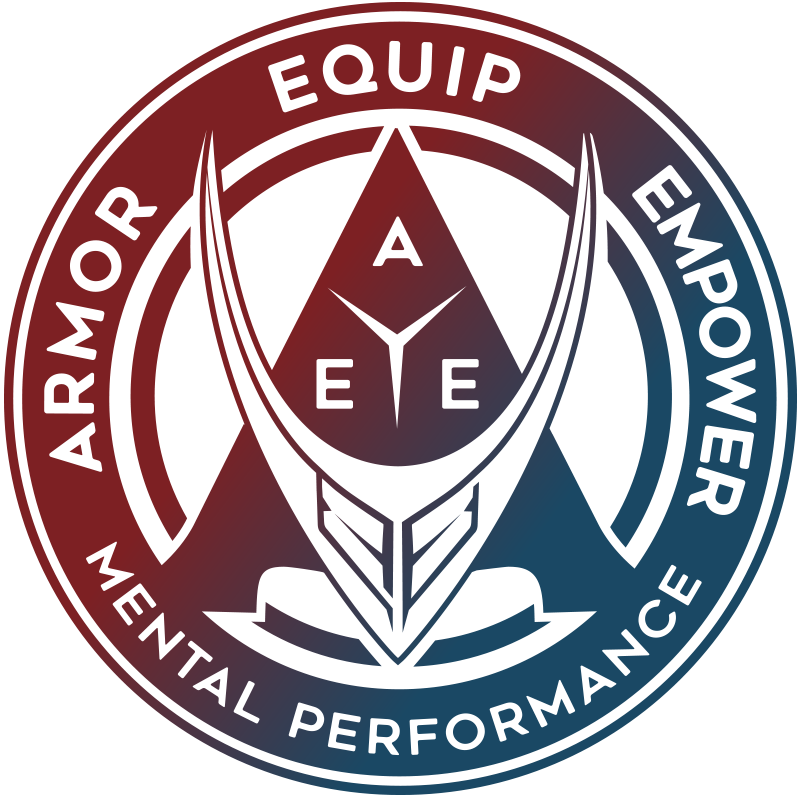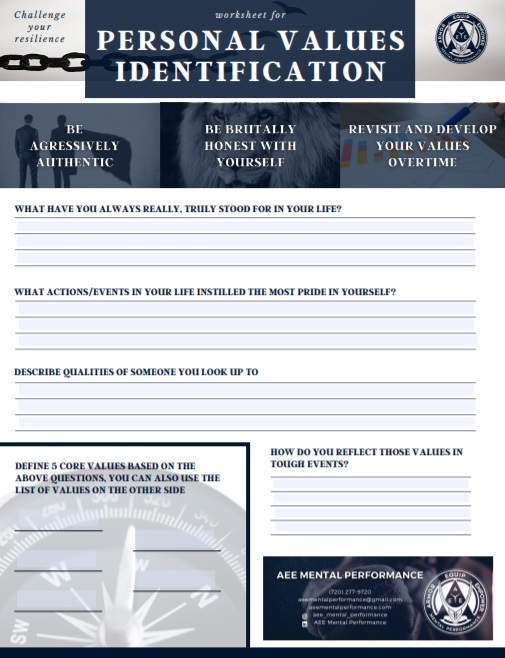recovery promoting
readiness to perform
Optimal recovery targeting four pillars for sustainable readiness to perform
what is Optimal recovery?
Optimal recovery - Recovery as a performance
Recovery is the ability to return to a normal state of health and strength within our body and mind. With recovery optimization, we get to that ready state quicker and more easier, which matters especially when we face stress or excessive spend of energy on a regular basis.
Although the majority of recovery processes happen involuntarily, we can have an impact on the efficiency of recovery by utilizing habits that set our body and mind up into the proper recovery state.
One of the main factors contributing to the quality of recovery that has been repeatedly shown through research is our moment-to-moment physiological state which is directly influenced by our autonomic nervous system.
The autonomic nervous system sends signals through hormones to our body to either perform or recover. Unfortunately, it is fairly hard to do both at the same time. When the body and mind are in the performance mode, they minimize the recovery processes, whereas when the body and mind are in the recovery state, they are not in the mode to perform optimally.

how to Optimize recovery for mental readiness to perform?
Parasympathetic Nervous System (PNS)
PNS is the type of autonomic nervous system that influences our body like a break paddle, like horse reins that slows our physiology down and puts us into the rest & digest state. PNS creates the opposite state from the sympathetic nervous system (SNS), the gas paddle, that puts the body into a state of alertness and energy, mobilizing us to action during physical activities or facing (possible) danger.
PNS leads our body and mind towards recovery; however, it can go too far, where recovery decreases and a freeze state occurs.
In that sense, SNS and PNS, while both continuously engaging our physiological processes, create an activation spectrum in which a specific range, a specific “physiological cocktail” allows for optimal recovery.
Such an optimal recovery range is achieved through engaging the ventral vagus nerve that keeps the body and mind in PNS just enough so the body executes recovery efforts without freezing or being overactivated (SNS). Recent research has found that the ventral vagus nerve is engaged mostly through social connection.
Through engaging all 4 pillars (see below), we regulate our mind and body and shift their activation towards the optimal recovery range. Then we maximize our recovery for readiness to perform.

Activation spectrum with a range for optimal recovery

We mentioned a sense of belonging as a way to manage stress and increase resilience. This phenomenon develops through a social connection that engages the ventral vagus nerve. Learn more about stress-management below:

Optimal recovery for readiness to perform engages 4 pillars
All four pillars have a mutual impact on each other. Such a web of interrelatedness also applies to the habits and routines you will learn below. Each routine primarily targets one of these pillars; however, by engaging and regulating one of those pillars, the routines ultimately influence and regulate the others (i.e. impact of sleep quality on physical recovery as well as mental and emotional).
Physical
Mental
Emotional
Spiritual
Impact of Recovery on Readiness
What is the main purpose of recovery?
We use recovery to process high-stress events, disengage from high-stress events, to recharge, and prepare for re-engagement in work or sport. Combine each of them, and you will optimize your overall recovery. Stressful and traumatic experiences impact our bodies, minds, and lives in multiple ways. Chronic stress, which is typical in high-stress occupations, yet the general population has been increasingly catching up, keeps our bodies constantly in the sympathetic, fight or flight, lifesaving mode. Operating in the sympathetic mode long term can disturb the immune system, the digestive system, cardiovascular (at higher risk of developing the cardiovascular disease), sleep, and reproductive systems. All these activities work efficiently only in the parasympathetic mode and are crucial for proper recovery and sustainable resilience.
As these recovery systems are misaligned, our recovery suffers and thus we are less ready for the next stressful event. The longer improper management of stress continues, this can also result in disempowerment (which can speak to a decrease in one’s self-efficacy) and disconnection (which can speak to a loss of social support). Misaligned recovery processes are in “danger”, especially after an unsuccessful performance/experience. Based on research, both self-efficacy and social support predict well-being, which then affects how ready and resilient you are overtime.
Time to evaluate your recovery
Why is recovery important to you?
When is the best time for your optimized recovery?
What does your recovery currently look like?
How does it work? Where can you improve?
What gets in the way of fully disengaging?
physical recovery
Physical recovery and its connection to readiness and performance
Physical recovery focuses on vital efforts that restore physical energy functioning as a basis of overall recovery through each pillar.
Sleep, and exercising (along with proper hydration, and eating) belong among habits primarily affecting our physical pillar.
Aligning circadian rhythm to the daily habits and performances as well as aligning the timing of those habits and performances helps to regulate physiological processes for maximizing recovery and other performance during the day.
"I'm tired and my body feels stressed all the time. I've just gone through the motions today."
Sleep optimization
Many professionals consider sleep to be the cornerstone for proper recovery, and we do as well. Sleep takes around 1/3 of our lives, and there is a reason for that. Poor sleep and therefore insufficient recovery has a negative impact on our readiness and performance. Poor decision making, slower reaction time, lower alertness and concentration, the prevalence of injury, emotional imbalance, inefficient learning are the main results of poor sleep. We encourage you to read more on our blog by clicking below where we break down in detail what happens when we lack quality sleep.
There are multiple reasons why we have poor sleep that significantly influence our readiness. Inability to fall asleep, waking up during the night, insufficient lenght of sleep, and low sleep quality.
Most of the struggle comes from ruminating in bed while engaging the sympathetic nervous system and unsynchronized circadian rhythm that predefines timing of the right physiological processes in the right time of the day – i.e. releasing melatonin in the evening and accumulating adenosine during the day to fall asleep at night, and releasing cortizol in the morning to wake up.

Become a free member to access PDF with 3 tips for how to overcome bed ruminations.

Exercising
Stress is an inevitable part of life and it has a significant, meaningful impact on the physiological processes (release of stress hormones) that put us into a sympathetic, ready-to-respond state. This physiological state, developed in us throughout evolution, is, therefore, a reason for stress and it is a state to set our body up for fighting or running away from danger. Nowadays, the danger is not a predator but a colleague, boss, competition, or an emergency call. As a result of staying in “fight or flight,” sympathetic state within a sedentary lifestyle, our body, in most situations, ends up not utilizing the stress hormones through movement and these hormones remain in our body longer than they should. By regularly exercising, we “process” these hormones in the way our bodies were used to for thousands of years and we, therefore, mitigate the negative effects of stress when not released properly. Consistent and regular exercise also releases endorphins that create a positive mindset and happy feeling and has been shown to increase confidence, improve mood, help relax, and improve quality of sleep. These are all elements necessary for optimal performance in stressful situations.

How to optimize your exercise to maximize recovery?
- Plan for the day and time when you want to exercise
- If exercising isn’t part of your habits routine, strategize building the habit first
- exercise at le
- don’t do a hard wokout before sleep (overactivated body makes it hard to fall asleep)
Benefits of exercising
- Pumps you up with endorphines
- Reduces stress
- Enhanced mood
- Boosts energy
- Promotes higher quality of sleep
mental recovery
Mental recovery and its connection to readiness and performance
Overthinking, replaying the past, and doubting the future belongs among common processes our mind performs on a daily basis. Even though they can be productive (to solve a problem or prevent failures), such processes usually run excessively due to the nature of our bran – the thinking machine often looking for possible danger.
Excessive thinking can be exhausting especially when we overidentify with them (i.e. we do not take a step back and apply a growth mindset that engages the ventral vagus nerve), or do not seek for productive problem-solving or progress.
"I can't stop thinking about it. My brain just keeps running."
Processing
Processing, for instance in a form of after-action-reviews used in high-risk occupations, is an extremely effective tool to have in your pocket. Processing and reflections serve multiple purposes that, when performed properly, help our brain take a break during the recovery time. They promote or lead to:
- an understanding the problem or objective
- a clear identification of what worked and did not work
- identification of the next steps to adjust, learn, improve, and succeed next time
- a clear plan for executing the adjustments and progress for future success

How to improve processing?
You can process and reflect either individually or collectively. Processing with someone else usually decreases stress, especially when you do it among people you trust. Through social connection, you engage the ventral vagus nerve that puts you into a calm, alert state that helps you operate in a growth mindset.
Sustain growth mindset that helps you see new perspectives and solutions. Approach the situation with curiosity. Seek and provide growth mindset focused feedback to strenghten your and others mindset.
Seek for self-discovery that pushes you to explore areas for your own growth. Explore un/controllables that often allow for seeing other possibilities as well as tell you what not to focus on and let go. Explore un/productive (self-)talk that keeps your attention from the solution and often gets you into the negative loop of thinking.
To learn more about how to let go and break the negative loop of thinking, see our Mindfulness Resource Room.
Timing is key
Your processing at your work should differ from processing at home. Home usually allows more time for processing in-depth, taking a step back, and seeing things from multiple perspectives.
Do not process before you sleep. Because processing usually puts us more into the sympathetic nervous system and shifts our brain’s gear to the next level, we recommend you to process at least an hour before bed. This way, you will have enough time to calm down, apply routines for enhancing sleep quality, and lay down with peace, so to speak.

emotional recovery
Emotional recovery and its connection to readiness and performance
Most high-stressful events are followed by an emotional response. Such a response can keep coming back, especially we start thought processes related to a stressful situation. Along with mental processes, emotions usually follow or are followed by physiological processes as well. When emotions take place in our recovery time, they can easily lead our body and mind towards the sympathetic nervous system and pull us from the recovery state. Emotions are like a bridge between the body and the mind and usually have an impact on both.
While in the physical pillar we focus more on the supportive efforts for recovery, by addressing emotions, we address a momentary state in which we occur. With that, emotional recovery includes effective techniques to decompress from a highly stressful situation that can be particularly useful for optimizing physical recovery such as sleep.
"I'm emotionally drained."
Mindfulness practice
One of the most effective techniques for managing stress and emotions that the research has been recently proving is a mindfulness practice.
As we mentioned in the mental recovery, sometimes we overidentify with our thoughts and this applies to our emotions as well. By creating a space between the stimulus and response, and by creating a cognitive distance from our emotions, these emotions will have less impact on us. Such an outcome can be noticeable by practice in the moment as well as overtime, which reflects also in restructuring our brain connections and change in size of amygdala, the part of the brain responsible for creating emotiona response. For more information, visit our Mindfulness for Self-regulation Resource Room.

spiritual recovery
Spiritual recovery and its connection to readiness and performance
The spiritual pillar entails our values, the reason why, and purpose behind what we do. It is essentially a driving engine for our actions. When the actions reflect our values, we reach meaning and fulfillment behind what we do – research confirmed. Spiritual pillar therefore essentially keeps us on track by shaping our motivation, persistence, resilience, and overall relationship to what we do.
Our values and our why sometimes get challenged by what we experience which might lead to higher distress as we start doubting our path/choices/decisions. Both values and the why, when not revisited especially after a highly stressful and challenging event, failure, or setback, might fade out in the shade of severity of the event.
Spiritual recovery helps us sustain on track, eliminate doubts related to our course of actions (therefore allow us to tap into the parasympathetic nervous system), and mentally prepare for the challenges of the next day or next stressful event.
"I don't know why I am doing this anymore."
Know your WHY and honor it
Our personal values highlight what we stand for and provide a personal guide, a personal code, that shape our thinking and actions. Honoring what we stand for will assure us that we are putting quality effort even in tough situations in which we are often pressured to act otherwise.
In case you find yourself not fully acting based on your values, that is a good sign and you should congratulate yourself. Awareness is the first step towards change and growth, and you are giving yourself a chance to do that.

How to develop core personal values?
Possibly, you might have never identified what you believe in most in your life and how that reflects in your actions.
Before you revisit your values as part of the recovery process, you have to know what guides you in your life, and especially when you face a rough situation.
The following worksheet will guide you towards your 5 core personal values. Sign up into our free membership and get access to the PDF.
5 tips on how to honor your Why
- Recognize what specifically you have done today that reflected your core values
- Remember that your approach to what you stand for is unique – treat it as your treasure
- Have a trusted body or a spouse who understands what you stand for and will remind you of that when you hit a roadblock
- Make a mental list of actions you plan to do that clearly reflect your values
- When you are done with the above, challenge the why behind your why. This will make your values even stronger.
- brian.bishop@aeementalperformance.com
- Denver Metro Area, CO



